Related Research Articles

Pope Clement XIV, born Giovanni Vincenzo Antonio Ganganelli, was head of the Catholic Church and ruler of the Papal States from 19 May 1769 to his death in September 1774. At the time of his election, he was the only Franciscan friar in the College of Cardinals, having been a member of OFM Conventual. He is the most recent pope to take the pontifical name of "Clement" upon his election.
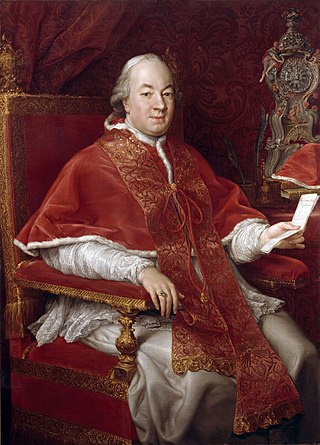
Pope Pius VI was head of the Catholic Church and ruler of the Papal States from 15 February 1775 to his death in August 1799.
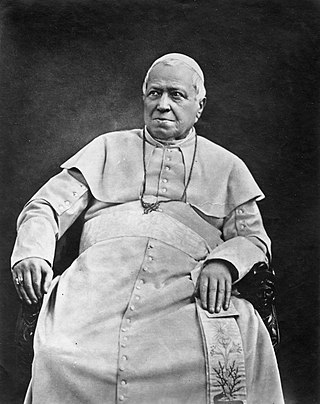
Pope Pius IX was head of the Catholic Church from 1846 to 1878. His reign of nearly 32 years is the longest of any pope in history. He was notable for convoking the First Vatican Council in 1868 and for permanently losing control of the Papal States in 1870 to the Kingdom of Italy. Thereafter, he refused to leave Vatican City, declaring himself a "prisoner in the Vatican".

In the papal conclave held from 14 to 16 June 1846, Giovanni Maria Mastai Ferretti, Bishop of Imola, was elected on the fourth ballot to succeed the recently deceased Gregory XVI as pope. He took the name Pius IX. Of the 62 members of the College of Cardinals, 52 assembled in the Quirinal Palace, one of the papal palaces in Rome and the seat of two earlier 19th century conclaves. The conclave was the last to elect a ruler of the Papal States, the extensive lands around Rome and Northern Italy which the Catholic Church governed until 1870.

The papal conclave that followed the death of Pius VI on 29 August 1799 lasted from 30 November 1799 to 14 March 1800 and led to the selection of Cardinal Barnaba Chiaramonti, who took the name Pius VII. This conclave was held in Venice and was the last to take place outside Rome. This period was marked by uncertainty for the papacy and the Roman Catholic Church following the invasion of the Papal States and abduction of Pius VI under the French Directory.

The papal conclave held from 24 February to 31 March 1829 to elect a successor to the recently deceased Leo XII resulted in the accession of Cardinal Francesco Castiglioni, who took the name Pius VIII.

The papal conclave held from 2 to 28 September 1823 ended with the election of Annibale della Genga to succeed the death recently deceased Pius VII as pope. Della Genga took the name Leo XII.

According to Roman Catholicism, the history of the papacy, the office held by the pope as head of the Catholic Church, spans from the time of Peter to the present day.

The Renaissance Papacy was a period of papal history between the Western Schism and the Reformation. From the election of Pope Martin V of the Council of Constance in 1417 to the Reformation in the 16th century, Western Christianity was largely free from schism as well as significant disputed papal claimants. There were many important divisions over the direction of the religion, but these were resolved through the then-settled procedures of the papal conclave.
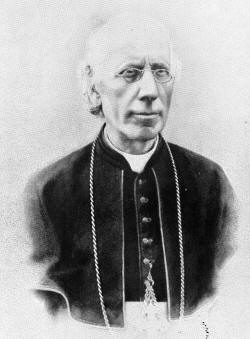
Luigi Oreglia di Santo Stefano was a cardinal of the Catholic Church in the late nineteenth century. He was Bishop of Ostia e Velletri and Dean of the Sacred College of Cardinals from 1896 until his death.
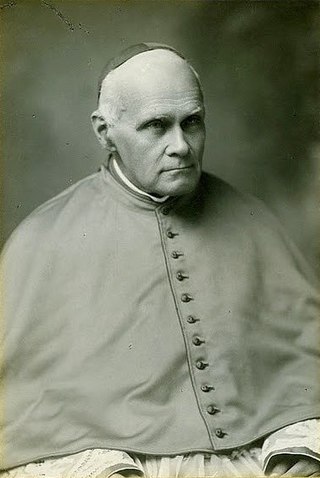
Louis Billot was a French Jesuit priest and theologian. He became a cardinal in 1911 and resigned from that status in 1927, the only person to do so in the twentieth century. While largely unknown in the modern age, he was nonetheless considered "the most important Thomistic speculative theologian of the late nineteenth century."
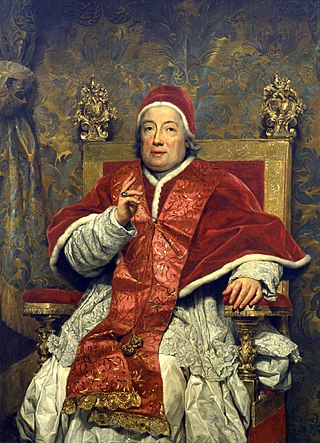
The 1758 papal conclave, convoked after the death of Pope Benedict XIV, elected Cardinal Carlo Rezzonico of Venice, who took the name Clement XIII.

The 1721 papal conclave, convoked after the death of Pope Clement XI, elected Cardinal Michelangelo de' Conti, who took the name of Innocent XIII.

The 1774–75 papal conclave, was convoked after the death of Pope Clement XIV and ended with the election of Cardinal Giovanni Angelo Braschi, who took the name of Pius VI.

The papal conclave held from 1 May 1314 to 7 August 1316 in the apostolic palace of Carpentras and then the Dominican house in Lyon was one of the longest conclaves in the history of the Roman Catholic Church and the first conclave of the Avignon Papacy. The length of the conclave was due to the division of the cardinals into three factions: Italian, Gascon, and French/Provençal.

The 1769 papal conclave, was convoked after the death of Pope Clement XIII. It elected as his successor Cardinal Lorenzo Ganganelli, who took the name Clement XIV.

The 1700 papal conclave was convened following the death of Pope Innocent XII. It ended in the election of Cardinal Giovanni Albani as Pope Clement XI. The conclave saw a rise in the dominance of the zelanti faction College of Cardinals. It remained deadlocked for a month until the death of the childless Charles II of Spain. The cardinal electors anticipated that his death without a clear heir would cause a political crisis, and moved to elect a pope that was seen as non-partisan.

The 1691 papal conclave was convened on the death of Pope Alexander VIII and ended with the election of Cardinal Antonio Pignatelli as Pope Innocent XII. It lasted for five months, from 12 February to 12 July 1691. The conclave became deadlocked after Catholic monarchs opposed the election of Gregorio Barbarigo, who some members of the College of Cardinals also viewed as too strict. The conclave only ended in July when cardinals started to become ill from the heat, and after French cardinals agreed to vote for Pignatelli despite him coming from Spanish-controlled Naples.

The 1724 papal conclave was called upon the death of Pope Innocent XIII. It began on 20 March 1724 and ended on 28 May that year with the election of Cardinal Vincenzo Maria Orsini, a Dominican friar, as Pope Benedict XIII. The conclave was made of largely the same electors that had elected Innocent in 1721, and the same factions dominated it. Multiple attempts were made to elect candidates acceptable to the various Catholic monarchies at the time, but none were successful until May. Benedict resisted his election for two days before being convinced to accept it.

The 1730 papal conclave elected Pope Clement XII as the successor to Pope Benedict XIII.
References
- ↑ Robinson, Adam Patrick (1 January 2012). The Career of Cardinal Giovanni Morone (1509–1580): Between Council and Inquisition. Routledge. p. 8. Retrieved 2024-04-04.
- ↑ "IX, The Papacy". History of the Catholic Church: From the Renaissance to the French Revolution. Vol. 1. Retrieved 2024-04-04.
- 1 2 Wolf, Hubert (1 January 2010). Pope and Devil: The Vatican's Archives and the Third Reich . Retrieved 2024-04-04.
- ↑ Prien, Hans (1 January 2013). "Christianity in Latin America: Revised and Expanded Edition page 319". Google Books. Retrieved 2024-04-04.